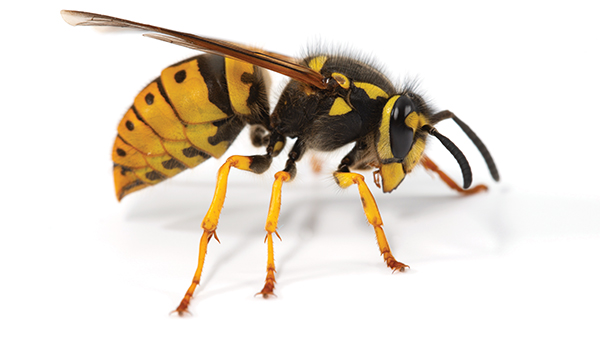
By and large, the public recognizes honey bees (Apis mellifera) as beneficial. They play a significant role in pollinating plants and are used commercially as an essential factor for raising food crops. However, it is a different story when stinging insects enter a structure.
Oh, Sugar!
A sugar processing facility routinely received raw sugar via barges on a large river. The sugar was purchased in huge quantities for a low price. There was no room to store it in silos. Ten football-field-sized mounds reached about 8 feet high. They sat out in the open, covered by large black plastic tarps. Spilled sugar along the edges became wet, attracting thousands of honey bees. The bees were flying in from across a river in an adjacent state.
After the raw sugar was processed, the syrup was stored in tall silos. Trucks with liquid-holding tanks backed up to each silo to be filled. As facility employees went to open the silo valves, honey bees rushed to the liquid syrup.
To make matters worse, the truck drivers were wearing yellow hard hats for safety, and the bees were landing on the hats. Some bees fell down the hats and onto the truck drivers’ necks. In response, the truck drivers refused to work in this surreal situation.
Solution: We confirmed the bees were coming for one reason: to feed. We instructed the facility to spread large amounts of spill control around each sugar pile. The spill control material was shoveled onto the edges of each pile of wet sugar from the back of a pickup truck. Once the tarped piles were spill-free, the facility removed loose sugar daily, so there was no chance for spills to build up again.
Next, we placed large pans of syrup near the river bank to serve as feeding stations, refilling them every few days as needed.
We then implemented three practices:
- We made the truck drivers switch to dark red hard hats.
- We enclosed the silo spouts inside a flexible screened cage so that a single person could reach inside and open the spout.
- The syrup was then released directly into the tank.
Within two days, the bees fed from the open pans and the truck drivers were back to loading their tanks. The facility purchased large, enclosed bins to protect the raw sugar from weather and pests. Sure, this would have been preferable from the start, but the budget, time and labor requirements made it lower on their priority list until the bees arrived on the scene.
Conclusion: Never let raw sugar get wet outdoors. If you encounter a spill in a parking lot or loading dock, do not wash it down in the daytime when honey bees are active. It is better to wash it down after dark. You may even need heaters to quickly dry what you washed down.
IPM for yellowjackets
While I was conducting a preliminary inspection at an elementary school, a group of little kids entered the cafeteria. Windows were open because of the hot summer weather, but the screens were not in good repair. The group joyfully ate lunch, and their juice spills and food crumbs attracted a few yellowjackets. Pandemonium ensued.
Solution: We removed the children, food and spills from the room. We closed the windows and knocked out the yellowjackets. We installed four yellowjacket traps outside, monitoring them throughout the warmer months.
Other steps we recommended — and the school took — included:
- Fixing door and window screens.
- Relocating the dumpster away from the windows and ensuring it was kept closed and tidy.
- Adding two trash cans closer to the tables so that messes could be dealt with immediately instead of carrying trash a distance to the original single trash can.
- Reminding staff of the importance of proper sanitation, even in the presence of rambunctious children.
Conclusion: Sometimes, there is no time to waste to write a report; you have to remove everyone from harm’s way. Simply killing the few yellowjackets was not the answer. Instead, it was an excellent opportunity to explain the importance of implementing an integrated pest management (IPM) program.
Leave A Comment